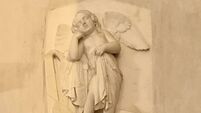Song thrush defends its musical title
The thrushes have some of the world’s finest singers in their ranks. They are virtually unique among birds in being able to sing two notes at the same time. The name “thrush” may derive from their Latin “turdus”, which bird ringers consider highly appropriate. When caught, a thrush empties its bowels all over the ringer’s hands, turning bird bags and clothing a deep indelible purple from the berries the bird has been eating.
January and February are the best months to see thrushes; we have no less than five species here at this time of year. Redwings and fieldfares begin arriving in the autumn but their numbers increase dramatically in mid-winter when northern Europe freezes over. Fieldfares will be particularly conspicuous over the next few weeks as they hop around the fields searching for invertebrates or gorging on discarded fruit in orchards and or on cotoneaster berries in gardens. Chaucer referred to them, appropriately, as “the frosty feldefares”. The name derives from “field farer” as in “wayfarer” and the flocks do indeed roam the countryside visiting field after field.














